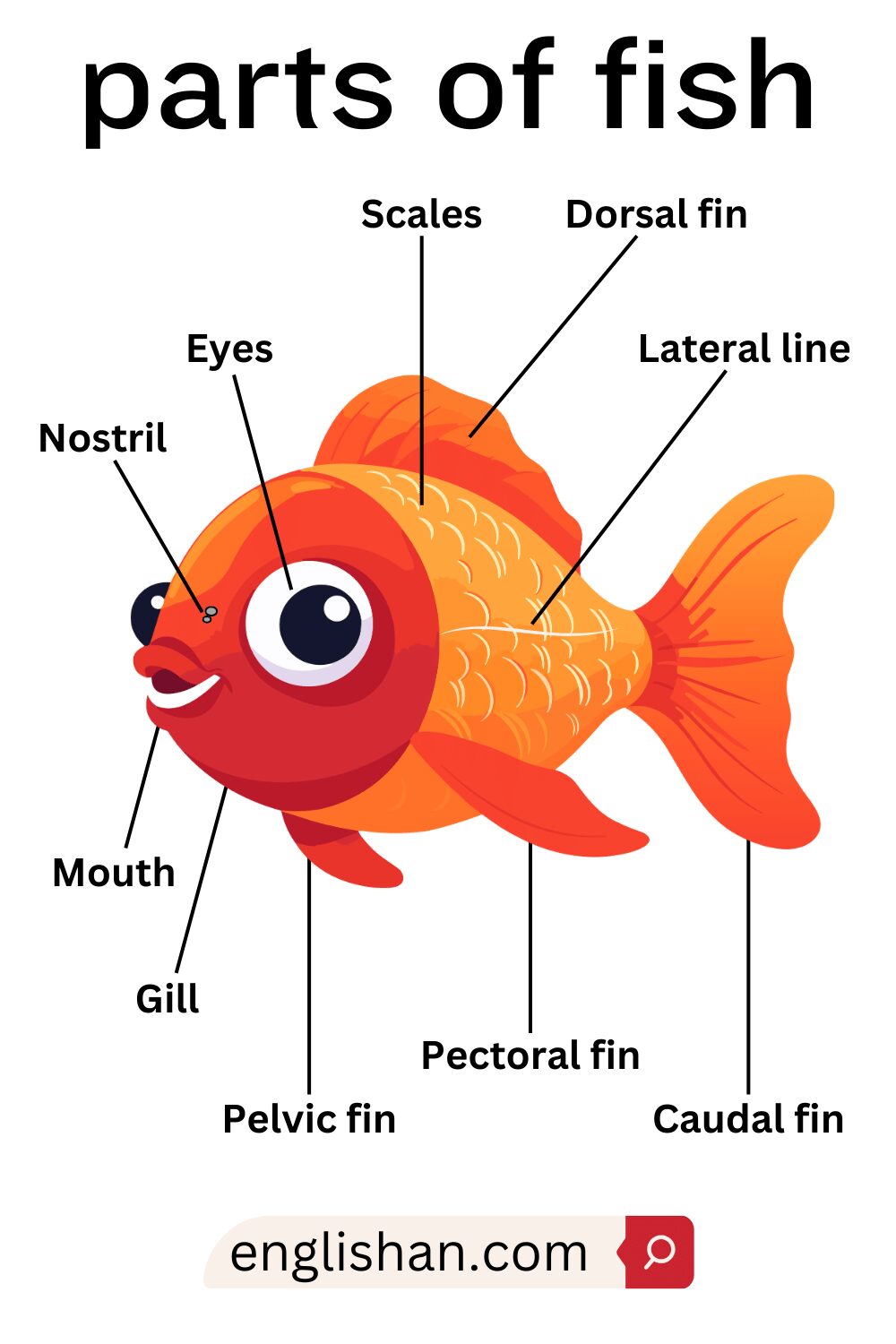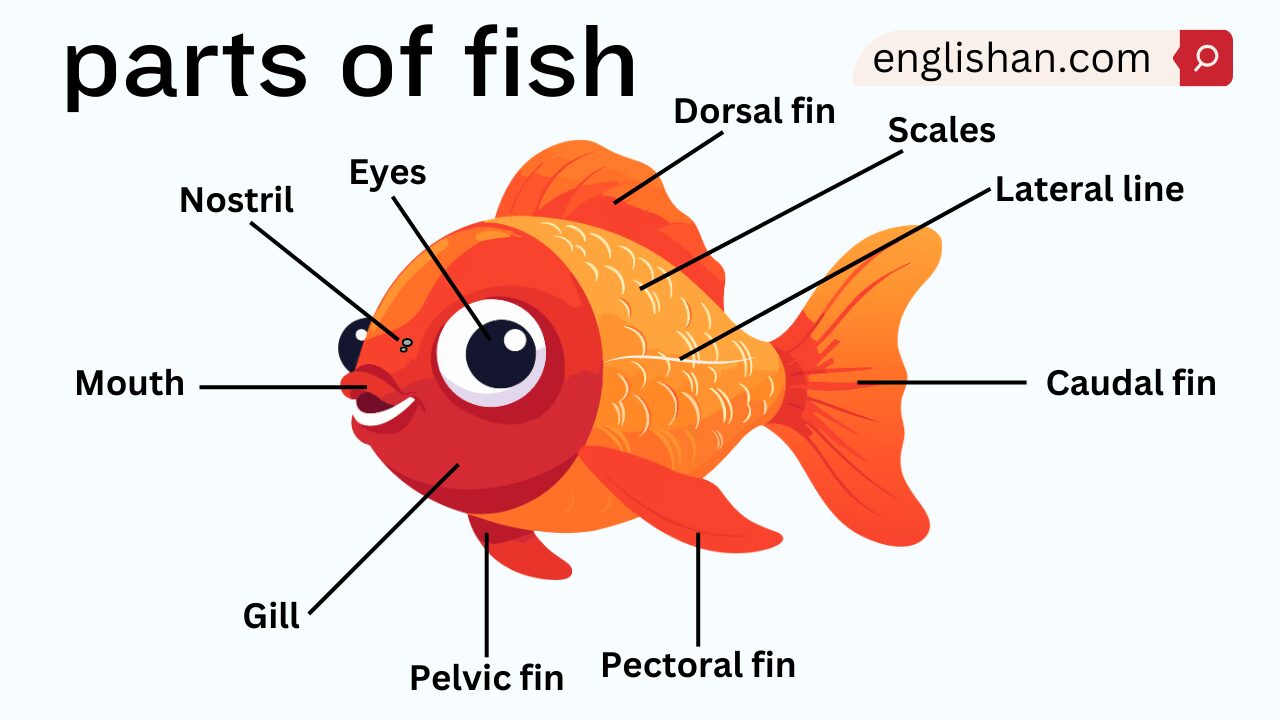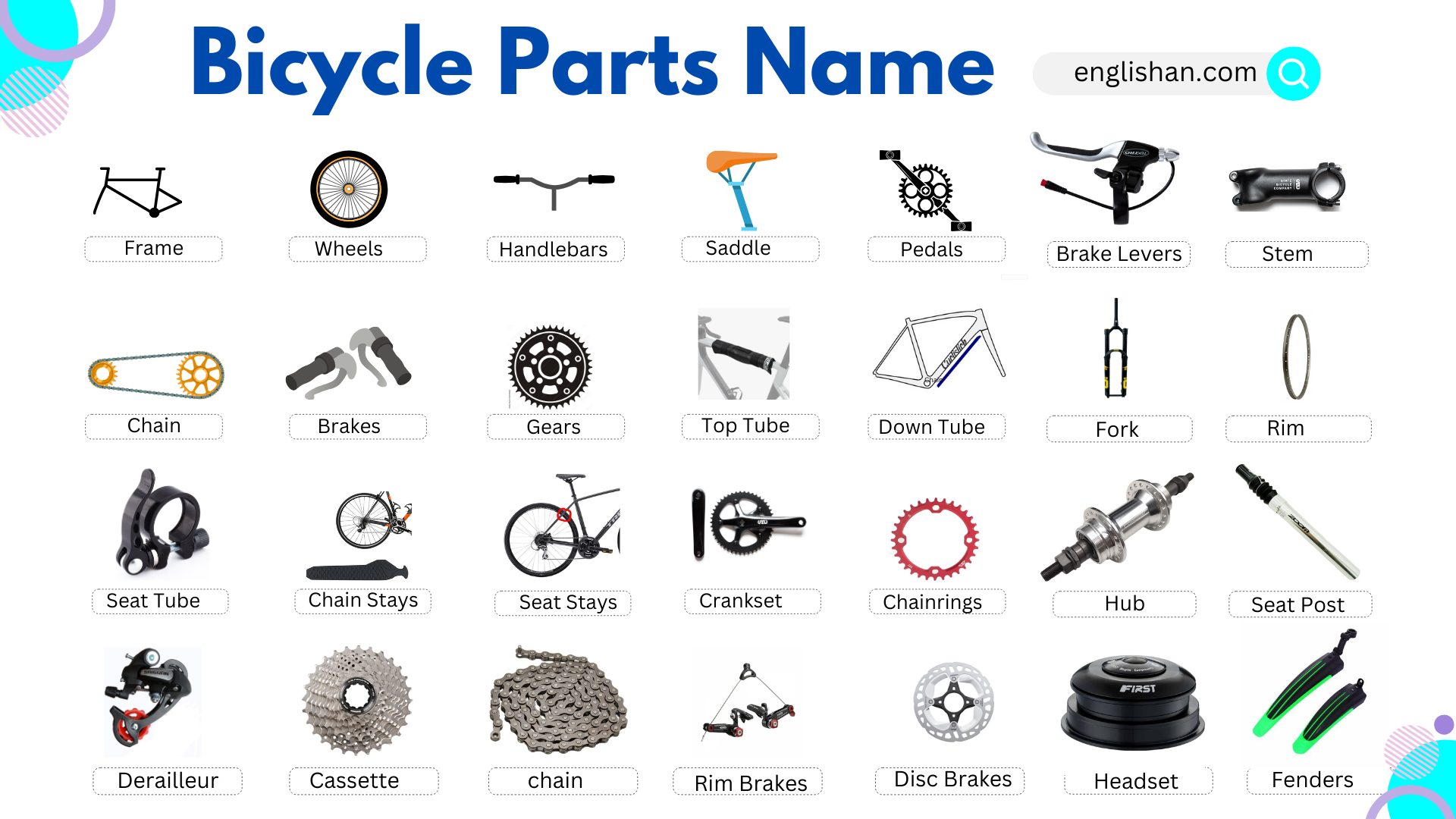Contents
In this blog post, we will help you understand the names of different parts of a fish in English. Fish have unique body structures that help them swim, breathe, and survive in water. Learning these terms will improve your knowledge of aquatic life and expand your vocabulary. Whether you are a student or someone interested in marine animals, knowing these names will help you describe fish clearly and accurately.
Want to learn more vocabulary? Check out our Vocabulary Category for more topics!
What is Fish?
Fish are a diverse group of aquatic animals that form an important part of the world’s ecosystems. They belong to the paraphyletic group called fish, which includes jawless (lampreys and hagfish), cartilaginous (sharks, rays, and chimeras), and bony (ray-finned fish and lobe-finned fish).
1. Classification of Fish
Jawless:
- Examples: Lampreys and hagfish.
- Characteristics: Lack true jaws and scales, often parasitic.
Cartilaginous Fish:
- Examples: Sharks, rays, and chimaeras.
- Characteristics: Skeletons made of cartilage, rough skin with placoid scales.
Bony Fish:
- Ray-finned: Most common group, fins supported by rays.
- Lobe-finned: Includes lungfish and coelacanths, fleshy lobes on their fins.
2. Anatomy and Physiology
Body Structure:
- Streamlined bodies for efficient swimming.
- Scales covering the body for protection.
Respiration:
- Gills for extracting oxygen from water.
- Some species have a labyrinth organ (lungfish) or can breathe air (lungfish, some catfish).
Reproduction:
- Most fish reproduce sexually.
- Various reproductive strategies: external fertilization (most fish), internal fertilization (some sharks), parental care (some species guard eggs and fry).
Sensory Organs:
- Well-developed senses, including sight, smell, and lateral line system for detecting vibrations in the water.
3. Habitats
Freshwater Fish:
- Found in rivers, lakes, and ponds.
- Examples: Trout, catfish, and salmon.
Saltwater Fish:
- Inhabit oceans and seas.
- Examples: Cod, tuna, and clownfish.
Anadromous and Catadromous Fish:
- Anadromous: Migrate from saltwater to freshwater to spawn (e.g., salmon).
- Catadromous: Migrate from freshwater to saltwater to spawn (e.g., eels).
4. Ecological Importance
Food Source:
- Essential for human diets worldwide.
- Commercial and recreational fishing industries.
Ecosystem Balance:
- Control population of smaller aquatic organisms.
- Some species act as indicators of environmental health.
5. Threats and Conservation
Overfishing:
- Depletes fish populations and disrupts ecosystems.
- Leads to the decline of certain species.
Habitat Destruction:
- Dam construction, pollution, and climate change affect its habitats.
Conservation Efforts:
- Establishment of marine protected areas.
- Sustainable fishing practices.
- Monitoring and regulation of commercial fishing.
6. Notable Examples
Salmon:
- Known for their remarkable migration to spawn in freshwater.
Clownfish:
- Popularized by the animated film Finding Nemo.
Tuna:
- Highly migratory and commercially important.
Angelfish:
- Colorful tropical fish popular in aquariums.
Fish play a crucial role in maintaining the health of aquatic ecosystems, and understanding their biology is essential for conservation and sustainable management.
List of Different Parts of A Fish
Here’s a list of different parts of a fish:
External Parts:
- Fins
- Scales
- Gills
- Eyes
- Mouth
Internal Parts:
- Heart
- Liver
- Gills
- Stomach
- Intestine
Fish Senses:
- Sight
- Hearing
- Taste
- Touch
- Smell
Parts of Fish
Here’s Parts of the Fish are as follows:
Scales:
- Protective plates covering the skin.
- Vary in size and type (cycloid, ctenoid).
- Provide defense against predators and reduce friction in water.
Lateral Line:
- A sensory organ running along the sides of the fish.
- Sensitive to changes in water pressure and vibrations.
- Helps detect movement and navigate in the environment.
Dorsal Fin:
- Located on the back of the fish.
- Provides stability and helps control direction.
- Variations in shape and size among species.
Eyes:
- Visual organs located on each side of the head.
- Adapted to varying light conditions.
- Important for hunting, avoiding predators, and communication.
Nostril:
- Paired openings on the snout.
- Used for olfaction (sense of smell) and water flow regulation.
- Can play a role in detecting food and mates.
Mouth:
- Opening on the front of the head.
- Varies in size and shape depending on the it’s diet.
- Equipped with teeth or other structures for feeding.
Gill:
- Respiratory organ for extracting oxygen from water.
- Consists of gill filaments and lamellae.
- Essential for the fish’s ability to breathe underwater.
Pelvic Fin:
- Paired fins located on the ventral side.
- Assist in stability and maneuvering.
- Can vary in size and shape among species.
Pectoral Fin:
- Paired fins on each side of the fish, behind the gills.
- Aid in steering, balancing, and stopping.
- Different shapes and sizes for different swimming behaviors.
Caudal Fin:
- Tail fin at the rear end of it.
- Main propulsive organ for forward movement.
- Varied shapes, adapted to different swimming styles.
Understanding these parts helps in appreciating the diverse adaptations that have developed for survival in their respective aquatic environments.

Types of Fish
There is an incredible diversity of species, ranging from small and colorful tropical to large and powerful predators. Here are some broad categories and types of fish:
Jawless:
- Lampreys
- Hagfish
Cartilaginous:
- Sharks
- Rays
- Chimaeras
Bony:
- Ray-finned Fish:
- Salmon
- Trout
- Tuna
- Catfish
- Bass
- Perch
- Lobe-finned Fish:
- Coelacanths
- Lungfish
Saltwater:
- Cod
- Flounder
- Mahi-mahi
- Swordfish
Freshwater:
- Carp
- Pike
- Tilapia
- Catfish
Tropical:
- Clownfish
- Angelfish
- Guppies
- Tetras
Game:
- Marlin
- Sailfish
- Tarpon
- Trout
Bottom-Dwelling:
- Halibut
- Flounder
- Grouper
Deep-Sea:
- Lanternfish
- Anglerfish
- Gulper Eel
Schooling:
- Herring
- Sardines
- Anchovies
Invasive Species:
- Snakehead Fish
- Lionfish
Economic and Commercially Important Fish:
- Tuna
- Salmon
- Cod
- Haddock
These are just a few examples, and there are thousands of species, each adapted to various environments and ecosystems. The classification and diversity are vast, making them a crucial component of aquatic ecosystems and important for human consumption and recreation.
Avoiding Mistakes in Caring
If you’re specifically referring to avoiding mistakes in caring (such as aquarium or aquaculture settings), here are some tips:
Water Quality Monitoring:
- Regular testing of pH, ammonia, nitrite, and nitrate levels.
- Proper filtration for clean water.
Feeding Practices:
- Consistent feeding schedule.
- Avoid overfeeding to prevent water pollution.
Temperature Control:
- Maintain appropriate water temperature.
- Prevent sudden temperature fluctuations.
Compatibility:
- Research and ensure compatibility among species.
- Avoid introducing aggressive or incompatible fish.
Tank Size:
- Provide an adequately sized tank.
- Avoid overcrowding for stress prevention.
Regular Observation:
- Regularly observe for signs of illness or stress.
- Promptly address any issues.
Quarantine New Fish:
- Quarantine before introducing them to the main tank.
Handling with Care:
- Handle gently during maintenance tasks.
- Avoid sudden movements to prevent stress.
Research:
- Stay informed about the specific needs of.
- Continuously educate yourself about proper care practices.
Emergency Preparedness:
- Have a plan for potential emergencies.
- Keep necessary supplies on hand, such as backup power and water conditioners.
By paying attention to these aspects, fish enthusiasts can create a healthy and thriving environment for their aquatic pets, minimizing the chances of mistakes that could negatively impact the well-being of the fish.
FAQs
Fish are broadly categorized into three groups: jawless fish (e.g., lampreys), cartilaginous fish (e.g., sharks), and bony fish (e.g., salmon, tuna).
Fish typically breathe through gills, which extract oxygen from water. Some species, like lungfish, can also breathe air.
Fish scales serve as a protective covering for the skin, providing defense against predators and reducing friction in water.
Fish maintain buoyancy through swim bladders (or similar structures), which help control their position in the water column.
The lateral line is a sensory organ that detects changes in water pressure and vibrations, helping fish navigate and detect movement in their environment.
Fins serve various purposes, including stability, maneuvering, and propulsion. Different types of fins have specific functions in swimming and controlling the fish’s movement.
Most fish reproduce sexually, with the female laying eggs and the male fertilizing them. Some species exhibit internal fertilization, and others engage in parental care.
The lifespan of fish varies widely among species. Some small fish may live for a few years, while larger species can live for several decades.
You May Also Like






